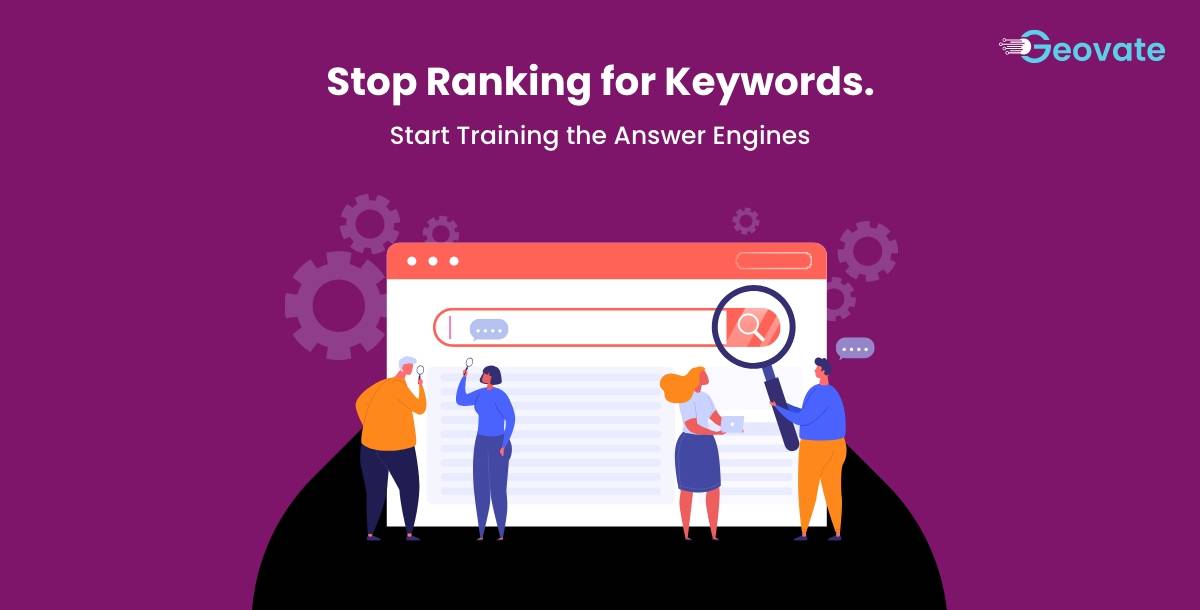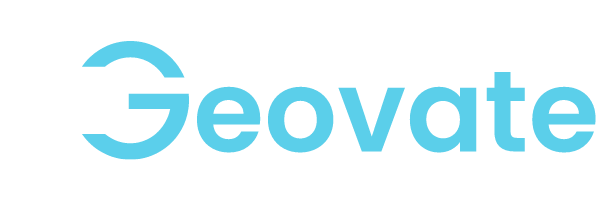Stop Ranking for Keywords. Start Training the Answer Engines
Mon,14 Jul 2025 12:36:00- Font Size
- Share Content

What is the fundamental difference between SEO and GEO?
SEO (Search Engine Optimization) is focused on persuading algorithms to rank your webpages higher in search results. You optimize metadata, build backlinks, and fine-tune on-page content so that when a user searches for a keyword, your link appears at or near the top of the blue-link list.
GEO (Generative Engine Optimization), on the other hand, is about teaching AI-powered answer engines—like ChatGPT, Perplexity, Google AIO, and Microsoft Copilot—to surface your content within their replies. Instead of vying for a spot on page one, GEO aims for your paragraph to become a training example or a retrieval snippet that the model reads and ultimately reproduces when a related question is asked. In essence, SEO optimizes for discovery; GEO optimizes for inclusion within AI knowledge pipelines.
What does Generative Engine Optimization (GEO) involve?
Generative Engine Optimization requires structuring your content so that AI systems can easily parse, understand, and store it. You begin by breaking complex topics into clear question-and-answer pairs, each tagged with semantic markup (e.g., h2 for questions) that highlights the scope of the inquiry. Next, you enrich pages with structured data—JSON-LD schemas for FAQs, how-to guides, and datasets—which signals to retrieval-augmented models the relationships between entities and their attributes. You then interlink these Q&As with natural-language anchor text to create contextual clusters that AI can traverse when fetching relevant passages. Finally, you build feedback loops by monitoring citations in AI-generated responses and refining any gaps or inaccuracies. In practice, GEO blends content engineering, schema strategy, and analytics to ensure your material becomes a go-to source for generative engines.
Why should marketers stop ranking for keywords and start training answer engines?
The rise of voice assistants, chatbots, and AI copilots means more users bypass traditional search results altogether. Today’s customer may simply ask an assistant, “What’s the best CRM for small businesses?” and receive a direct answer rather than a list of links to click. If your content isn’t optimized for generative engines, it won’t even be in the AI’s answer pool—no matter how high you rank on Google. By shifting focus from keyword ranking to training answer engines, you secure prominent placement inside the AI’s response. That equates to brand mentions, trust signals, and downstream clicks embedded in the chat interface. Over time, this approach not only preserves your visibility in an AI-first landscape but also accelerates conversion by meeting users at the point of decision—inside the conversation.
How do generative engines serve knowledge differently than search engines serve links?
Search engines function as referral systems: you enter keywords, receive a ranked list of URLs, and then decide which link to click. Your journey from query to content always involves an extra step. Generative engines eliminate that step by synthesizing information from thousands of sources into a unified answer. They rely on two mechanisms: pre-training on large text corpora (where your content may influence the model’s internal weights) and retrieval-augmented generation (where relevant passages are fetched from an external index at query time). The result is a seamless reply that often cites no links or only a handful of primary sources. For content creators, this means paragraphs become the atomic units of knowledge—ready to be inserted directly into conversations—rather than mere components of a ranked page.
What actionable strategies make up Generative Engine Optimization (GEO)?
Adopting GEO in your workflow means:
1. Adopt Q&A frameworks. Break every topic into explicit questions (## headings) followed by concise answers. Generative models excel at mapping user queries to these discrete blocks, making your content highly retrievable.
2. Enrich with structured data. Implement JSON-LD for FAQs, how-to steps, and datasets. This layer of machine-readable context helps AI pipelines distinguish your content as authoritative and structured.
3. Optimize internal linking for context. Use natural-language anchor text that mirrors conversational queries to link related Q&As. This builds semantic clusters that models traverse during retrieval, improving passage relevance.
4. Leverage feedback loops. Track when and how often AI assistants pull in your content, monitor upvotes or user corrections, and iteratively refine your answers to fill gaps or clarify ambiguities.
5. Collaborate with product and engineering. Expose your knowledge base through APIs or vector embeddings for internal model training and RAG systems. Embedding your content at the data layer ensures every new AI iteration learns directly from your expertise.
By weaving these tactics into your content strategy, you move from passive ranking to active training—positioning your organization as an indispensable source for tomorrow’s AI-driven answers.
What role does Answer Engine Optimization (AEO) play within GEO?
While GEO focuses on ensuring your content enters AI systems, Answer Engine Optimization refines how that content is presented once retrieved. AEO emphasizes tone alignment with the assistant’s persona, front-loading summaries in the first two sentences, and embedding clear attributions (“According to [Your Brand], …”) to reinforce credibility. It also integrates user-friendly CTAs—like “For more details, visit …”—without interrupting the flow of the response. In effect, AEO polishes the final mile of the user experience, boosting clarity, trust, and conversion rates inside the very interface where decisions are made.
How can you turn your paragraphs into your most valuable SEO asset?
To make each paragraph a mini knowledge goldmine:
1. Make each paragraph self-contained. Begin with a thesis sentence or mini-question that flags its topic. Follow with data, examples, or evidence, then conclude with a sentence that reinforces the key takeaway. This structure lets AI systems extract coherent snippets with minimal context.
2. Embed micro-summaries. Use bold or italic formatting sparingly to highlight critical facts or statistics at the start of a paragraph. These “mini abstracts” help generative engines locate and pull the most relevant lines when answering queries.
3. Ensure semantic density. Eliminate filler. Every sentence should introduce a new fact, perspective, or clarification. Incorporate synonyms and related terms to widen the net of query matches and strengthen retrieval signals.
4. Use logical flow. Group paragraphs under clear question headings and employ transition phrases—“Moreover,” “Conversely,” “For example”—to guide both readers and models through your reasoning. Cohesive sequencing ensures AI systems can stitch multiple snippets into a coherent, multi-part answer.
By treating paragraphs as atomic units of knowledge—each optimized for standalone clarity—you convert your content library into a training ground for any AI assistant, ensuring your expertise surfaces in every answer.
Frequently Asked Questions
Q1. What is Generative Engine Optimization (GEO)?
A. Generative Engine Optimization (GEO) is the practice of structuring and enriching your content so that AI-powered answer engines (like ChatGPT or Bard) can ingest, retrieve, and surface it directly in their responses. Unlike traditional SEO, which optimizes for link rankings, GEO optimizes for inclusion within AI knowledge pipelines through Q&A formatting, structured data, and feedback loops.
Q2. How does GEO differ from Answer Engine Optimization (AEO)?
A. GEO focuses on making your content discoverable and trainable by generative models—structuring it as question-answer pairs, adding schema markup, and exposing it via APIs or embeddings. AEO, by contrast, hones how that content is presented in the generated answer itself: tone alignment, front-loaded summaries, clear attributions, and seamless CTAs to maximize clarity and conversion.
Q3. Why are paragraphs now the most valuable SEO asset?
A. In the age of AI assistants, each paragraph acts as an atomic knowledge unit that can be pulled into a generated answer. By making paragraphs self-contained, semantically dense, and logically coherent under clear question headings, you ensure they serve as precise retrieval snippets—maximizing both visibility in AI responses and real user engagement.
Q4. What metrics should I track to measure GEO success?
A. Key GEO metrics include “answer share” (how often your content underpins AI replies), citation rate (frequency of link-backs or brand mentions in answers), user feedback signals (upvotes, corrections), and downstream engagement from AI-suggested links. Monitoring these lets you refine content iteratively for maximum impact within AI ecosystems.
Q5. How can I integrate GEO into my existing content workflow?
A. Start by auditing high-value pages and converting sections into Q&A blocks with h2 questions and concise answers. Layer in JSON-LD schema for FAQs and HowTo guides, interlink related Q&As with natural-language anchors, and work with engineering to expose your content as vector embeddings or via APIs. Finally, set up feedback loops—track AI citations and user corrections—to continuously optimize.
